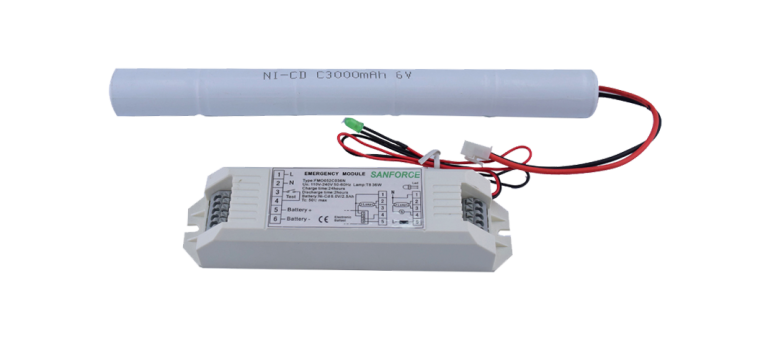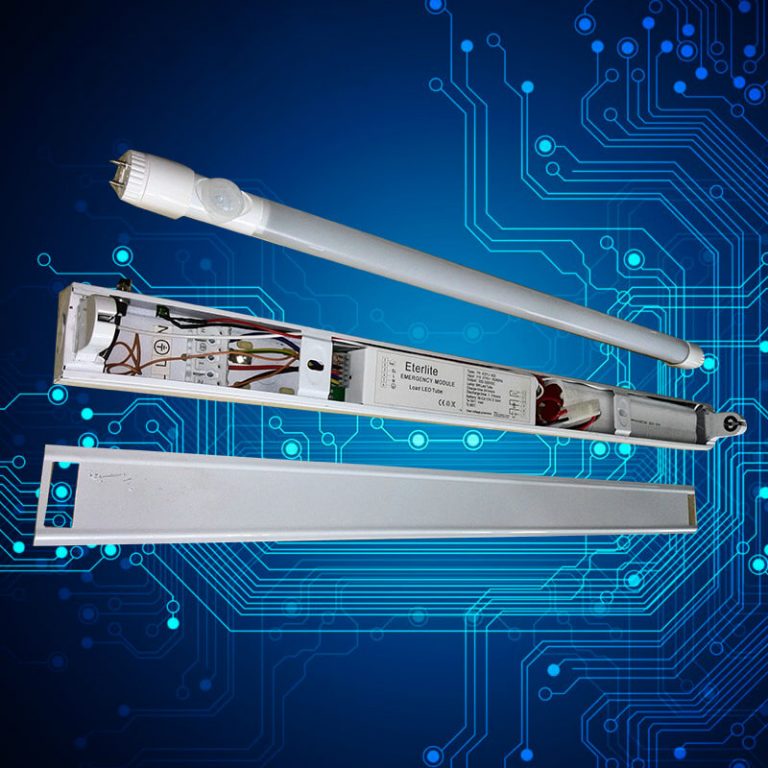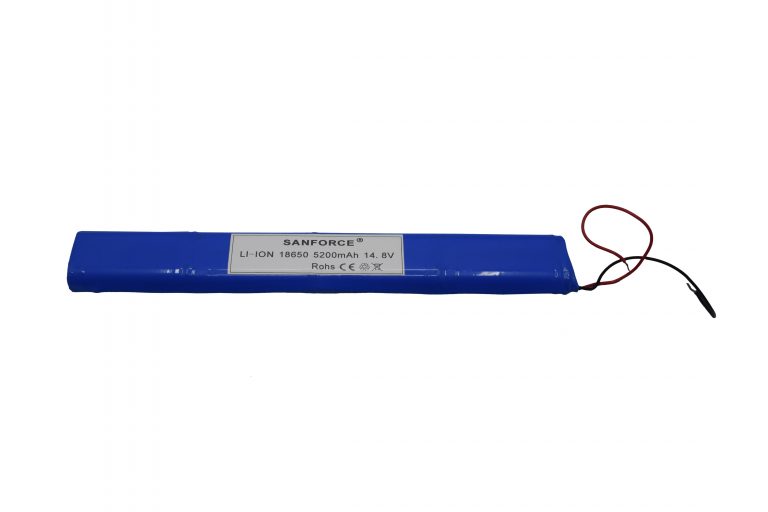LED lights are one of the most popular luminaries across the world, and of course, there are plenty of reasons behind the popularity.
One thing, among the many, for which LED (that is light imitating diodes) are popular is less energy consumption.
These luminaries require very less power supply to illuminate than conventional halogen and fluorescent lights.
However, LED luminaires to operate within a defined temperature range and stable and uniform current to illuminate. Power and temperature requirements differ from one type of LED to another.
To provide the LEDs in a lighting source, be it LED Tube, LED downlight, or LED panel, a stable and conducive environment, they require a driver to control the temperature as well as the power supply to the LEDs.
These drivers can come fitted with the LED light or in some cases, come as external fitting.
Most LEDs come fitted with LED driver – these are called internal LED driver, and if an LED comes with a driver that is not integrated into the LED light source, then this type of drivers are called LED external driver.

The LED emergency driver, unlike the LED drivers, is used to convert an ordinary light into a non-maintained emergency light. LED emergency driver monitors and manages the power source for an LED.
While the power mains are on, this driver supplies power to the LED from the mains and keeps charging the battery integrated with it.
In case, the primaries go down, because of any reason, the LED emergency driver switches the power supply to the battery in the split of a second and averts the light from switching off.
Unlike normal LED drivers, these drivers operate off of a battery and supply configured power to the LED fixture in case of a power outage. Generally, these drivers are configured to supply less power to the LED fixture than required.
Less power is supplied to LED fixtures to decrease the consumption of battery charge and increase the duration of time the light will remain illuminated on battery power.
However, the supply of energy is configurable, and some manufacturers offer pre-customized LED emergency drivers based on one’s need.
With the basics done, let’s dive into details that you should be looking at while selecting LED emergency drivers.
Voltage can be understood as an electromotive force, which is a quantitative expression of the potential difference between the two points. It allows the charge to flow smoothly to ensure the lightning LED. Electrical appliances use ‘V’ to denote voltage that they will consume.
Every LED fixture comes with a specified voltage. Before deciding on an LED emergency driver, ensure that you are aware of the voltage requirements.
There are two types of voltages. Input voltage is the voltage that an LED emergency driver can take in, and output voltage, also known as Voltage flow (Vf), or Output Voltage, is the voltage that the driver can provide.
It is crucial that the flow of the output voltage matches the voltage requirements of the LED fixture.
In the above Sanforce Emergency LED driver, the output voltage range is 110-265V. This means that the voltage range can be configured to the exact requirement of the LED fixture.
However, any LED fixture which has a voltage requirement lower or higher than the given range, cannot be installed with an LED emergency driver.
Wattage is the amount of power expressed in watts. It can be explained as the amount of energy required to operate an electrical appliance or an electrical device.
Watt is the measure of how much power is released each second. Watt is calculated multiplying voltage with current, indicating the direct relationship among each other.
It is essential to select those emergency drivers which has maximum wattage. It should be above the wattage requirement of the LED light. Only then, LED emergency drivers can operate with a smooth flow.
Safety is a crucial aspect of electric appliances, including light fixtures. As such, every LED emergency driver comes with an IP rating or/and UL Class rating. You should select an LED driver based on the surrounding where it will be installed and the UL Class/ IP rating of an LED emergency driver in consideration.

Before we move further, let us explain what an IP rating is, and why is it important. IP Ratings, also known as International Protection Marking or Ingress Protection Marking, defines the level of safety that any mechanical casing or electric enclosure provides to an electrical appliance against intrusion from foreign bodies like water, accidental contact, dirt, etc. along with moisture.
IP67 is generally taken as well protected from dust along with temporary immersion in water. They are seen as protection measuring tools from solid objects and water protection elements.
Similarly, UL Class ratings, provided by Underwriters Laboratories, also examines and provides ratings for electrical appliances. Its UL Class 1 and 2 ratings offer insights into the safety standards of the drivers.
Any UL Class 2 drive is regarded to be safe to contact and without any significant safety protection. This type of ratings ensures that the devices’ voltage output and safety protection are not hazardous.

There are different types of LED lights available in the market like LED tube, LED panel, LED downlight, or LED strip. These LEDs are also available in two broad categories- from indoor LED to outdoor.
Each LED type has its specific requirements in terms of input and output voltage, internal or external driver, and the type of current to illuminate the luminary.
Depending on the nature of the LED that is being used, an appropriate LED Emergency driver should be selected. For example, if the LED is to be installed in subzero temperature, a driver that functions in such surroundings should be chosen.
Apart from that climate and weather conditions, the size of the LED fixture should be considered while selecting an LED emergency driver.
Discuss your LED lamps’ physical dimension requirements with your LED emergency driver provider beforehand to ensure that you have a smooth experience in installing them.
Most of the LED emergency drivers are configured to supply less power than an LED luminary would require to illuminate fully to save battery charge and extend the power backup life. But there are LED emergency drivers that provide full power to the luminaries even if the light goes off.
So, while installing an LED emergency driver, you should consider the impact of dimming light in the area. If dimming of the light is going to affect the operations around, like a surgery room, then you should be looking for LED emergency drivers that can provide high voltages to the LED luminary even if the mains go down.
Are massive electricity bills at the end of the month a concern for you or your organization? Are you focused on cutting down the cost? Or are you focused on having fully illuminated surroundings, without any regard to the electricity bill?
LED emergency drivers can be configured to control the consumption of power. These drivers can control the flow of energy to the luminary during standard or power outage period.
Custom LED emergency driver providers like Sanforce Technology offer various configurable options for you to choose from.
Discuss your needs and your ideal situation with the company rep before zeroing on LED emergency drivers. See if the company can provide you products that can help you cut some corners of the electricity bill while not affecting your illumination needs.
Rechargeable batteries are one of the crucial components of the LED emergency driver. Capacity and the type of battery used in a LED emergency fixture is detrimental to the fixture’s performance.
There are three types of rechargeable batteries available, i.e. Nickel Cadmium (NiCd), Nickel Metal Hydride (NiMH), and Lithium-Ion (Li-Ion) batteries.

Each of these batteries offers various levels of battery backup duration, can operate in different environmental conditions. While each of them is safe, but the safety is relative to the surrounding where the fixture is operated.
Sanforce has written an easy to understand guide on rechargeable batteries for dummies and if you would like to dive deep into the battery science head over there.
In the meantime, we would recommend you to discuss your needs with your choice of LED emergency driver provider and have them present suitable options for you. We are sure they will offer options that align with your needs.
If you are considering retrofitting your existing luminaires with LED emergency drivers or would like to more on how they could help you make your surroundings safer, talk to one of our representatives.
Send us your inquiry at info@sanforce-tech.com, and we will get back with all the information you will need to make an informed decision.
And if you think we have missed out on any aspects, let us know in the comments below.
Not sure what you required for your lightining project ?
Get in touch with us for FREE consultation.